Scholarly Art Journal Articles on Peter Paul Rubens the Raising of the Cross
Peter Paul Rubens, Top of the Cross, from Saint Walburga, 1610, oil on woods, center panel: 15′ 1-7/eight″ x eleven′ 1-i/2″ (at present in Antwerp Cathedral)
The Superlative of the Cantankerous altarpiece is a masterpiece of Baroque painting by the Flemish painter Peter Paul Rubens. The piece of work was originally installed on the high altar of the Church of St. Walburga in Antwerp (since destroyed), and is now located in the Cathedral of Our Lady in Antwerp.
This triptych (a painting—unremarkably an altarpiece—comprised of two outer "wings" and a fundamental panel) is impressive in its size, measuring 15 anxiety in height and 21 anxiety wide when open. The original frame, unfortunately lost, would accept made the painting fifty-fifty more impressive in size! Due to its very size, Rubens actually painted information technology on-site behind a curtain. Iv saints associated with the church building of St. Walburga can be found on the exterior of the wings (visible when the altarpiece is closed): Saints Amandus and Walburga on the left and Saints Catherine of Alexandria and Eligius on the right.
Baroque dynamism
Rubens was ane of the most prolific and sought subsequently painters of the Baroque period, generally (although not e'er) defined in painting and sculpture by the representation of action and emotion in means meant to inspire the Cosmic faithful (this triptych was painted less than a century after Martin Luther'south challenge to the authority of the Catholic Church building).
In the fundamental panel, we see the dramatic moment when the cross of Christ's crucifixion is being raised to its upright position. Rubens created a strong diagonal emphasis by placing the base of the cross at the far lower right of the composition and the top of the cross in the upper left—making Christ's body the focal point. This stiff diagonal reinforces the notion that this is an effect unfolding before the viewer, as the men struggle to lift the weight of their burden.
In the left panel (below, left) are St. John the Evangelist and the Virgin Mary, who, standing in the shadow of the rocky outcrop above them, look to their left at what unfolds before their optics. Shown in serenity resignation and grief over the fate of Christ, the grouping of women below is a stark contrast of overwrought emotion. Here besides Rubens uses a diagonal forth the line of the women from the lower right to the mid-left, setting John and Mary apart, allowing the viewer to focus on their reaction.
A unified narrative and biblical accuracy
In addition to the powerful figural limerick, the three panels are visually unified through the landscape and sky. The left and central panels share a rocky outcropping covered with oak trees and vines (both of which have Christological significance). Notice that St. John, the Virgin Mary and the Roman soldiers just to the left of the cross are standing on the same ground-line.
Rubens and a reflection of Italy
The Superlative of the Cross altarpiece was the first commission Rubens received after returning to Antwerp from his Italian sojourn from 1600 to 1608/9 where he worked in the cities of Mantua, Genoa, and Rome.
Given his extended time in Italy, information technology is not surprising that we see a number of Italian influences in this work. The richness of the coloration (discover the blues and reds throughout the composition) and Rubens' painterly technique recalls that of the Venetian master Titian, while the dramatic contrasts of light and dark bring to heed Caravaggio's tenebrism (darkness) in his Roman compositions, such as the Crucifixion of St. Peter (left). And indeed, we can clearly run into Rubens' interest in his Italian counterpart in the sense of physical exertion, the utilize of foreshortening—where figures push past the boundaries of the picture airplane into the infinite of the viewer, and in the use of the diagonal.
In terms of the muscularity and physicality of Ruben's male figures, a clear connection tin can be drawn to Michelangelo's nude males (the ignudi) on the Sistine Chapel ceiling. In add-on to looking at the works of past and gimmicky masters, nosotros know Rubens was also interested in the report of classical artifact (ancient Greece and Rome). In fact, the figure of Christ seems to have been based on one of the almost famous works of antiquity, the Laocoön, whichRubens made drawings of during his time in Rome.
Elevation: altarpiece and loftier chantry
When the Elevation of the Cross altarpiece was placed on the high altar, there was a specific connection being forged between the subject of the painting and the function of the altar. The deed of raising an object up is known in Latin as elevatio. During the Mass performed by the priest at the high chantry, there is a moment when the Eucharistic wafer (miraculously transformed into the torso of Christ) is elevated. Thus, when the congregation faced the high altar, they not merely saw the elevatio of Christ'southward cross just the height of the wafer, and thus the altarpiece and the ritual of the mass performed in front end of it visually reinforced the bulletin of Christ'southward sacrifice on behalf of mankind.
Smarthistory images for teaching and learning:
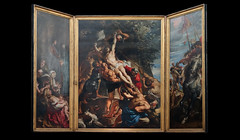
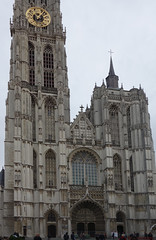
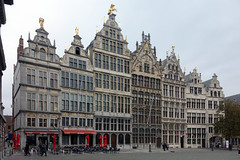
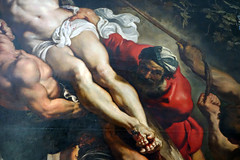
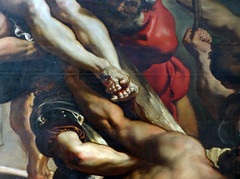
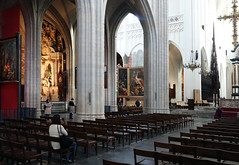
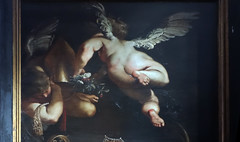
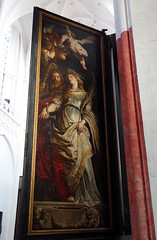
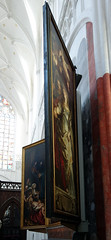
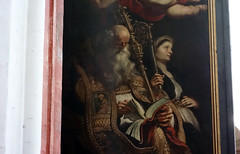

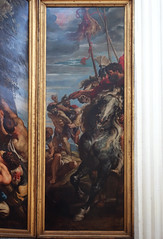

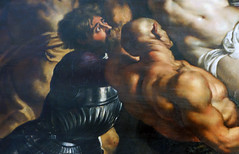
More Smarthistory images…
Source: https://smarthistory.org/peter-paul-rubens-elevation-of-the-cross/
0 Response to "Scholarly Art Journal Articles on Peter Paul Rubens the Raising of the Cross"
Post a Comment